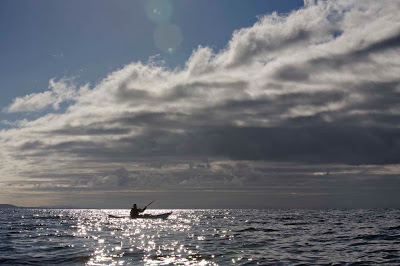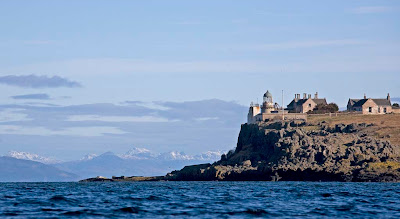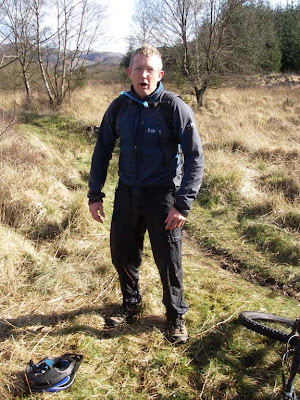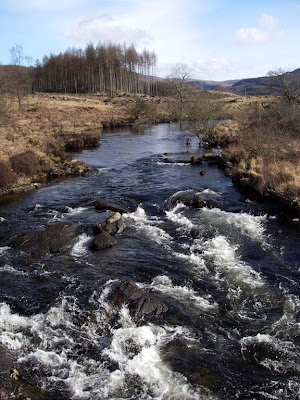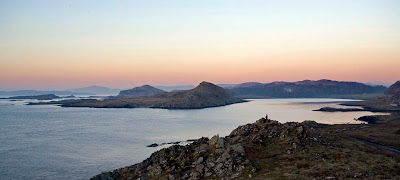The Primus EtaPower EF integrated stove and pan. Introduction
IntroductionI first became interested in camping stoves with heat exchangers after a windy week in North Uist and Boreray in the Outer Hebrides. It was so windy and it took so long to heat anything that we ran out of gas. Fortunately we found where some peats had been left to dry. There were a few scraps of dry peat left, where the stacks had been built, to keep us going….
Then the
JetBoil came along but as its name suggests, it is only really suited to boiling. The Primus EtaPower EF is the most recent development of this type of stove.
Primus are a well established company with excellent after sales support. I still have, in working order, a 90 year old Primus half pint paraffin stove, which I inherited from my great uncle. I recently got spare lead and leather washers from
Tiso.
 Design
DesignThe Primus EtaPower is an extremely well thought out integrated design which is made from very high quality materials. It is a combination of a burner unit/base, windshield, pot, lid/frying pan handle, wiping cloth and insulated carry case. The whole thing packs into the cylindrical carry case which measures 22cm diameter by 12.5cm deep and weighs 850g. This means it will fit through the 24cm round hatch covers fitted on many sea kayaks.
AssemblyIt is very easy to assemble. The burner unit including hose and piezo ignition can be detached from the base for transport but I usually leave it assembled. (Unless I decide to take a second 1l pot, which will fit inside the standard pot but it then is fiddlier to fit the burner/base combination inside the smaller pot without removing the burner from the base.) The base sits very low, directly on the ground because unlike other heat exchanger stoves which screw directly onto the gas cylinder, this stove has a hose which runs to the separate gas cylinder. This low position of the burner could burn an inflammable surface so you would need to be careful and not use the stove on a bothy table or dry grass. Once the windscreen is clipped to the base/burner unit, you can fold out three serrated pot supports. You can use the stove with bigger pots than that supplied but then you cannot use the windshield. Neither can you use the windshield for frying in the lid which doubles up as a frying pan.
The pot and lidThe 2.1l pot is made from hard anodised aluminium with a heat exchanger permanently fixed to the bottom. The internal diameter of the heat exchanger ring is 10cm so you could still use the EtaPower pot with other stoves in the unlikely event of a burner failure. The pot has a durable and effective non-stick coating. The pot handle looks pretty standard until you notice the little rubber pads inside the jaws which prevent scratching of the non stick coating! What attention to detail. The pot handle will not lift the tight fitting lid if you invert over the pot for boiling but the supplied cloth is big enough to use and stop burning your fingers. This is a further demonstration of the thought that has gone into the usability of this product. Only then will you discover you are still one step behind the designers! If you put the lid on the pot right way up, there is just enough bevel at its base to secure it inside the pot rim. In this position you can use the pot handle and you could keep a fried steak onions and mushrooms warm while you cook some other vegetables in the pot. If cooking something like porridge, you can boil it up then put the pot into the insulated carrying case, the case even has a dip on the side so that the handle fits in. You can then zip on the lid to let the porridge continue to cook for a few minutes saving more gas. When using this stove with the lid as a frying pan, you need to be careful not to turn the heat up full or you will warp the lid! However, this should not be a problem as the burner is so controllable.

If I am on my own I usually eat directly out of the pot to save dirtying a plate. I use a plastic spoon to avoid scraping the non stick coating. If you do this and hold the pot with the handle, you will find the heat exchanger now works in reverse and the wind will cool your meal very quickly. The solution is simple, put the pot in the insulated case. You can now enjoy your meal at a leisurely pace and it stays warm unlike your friends who are bolting their food off their plates before it get cold.
The burner and cylinderThe gas cylinder does not have a regulator like the MSR integrated stove but because it is on a long hose, you have several advantages. First is that the low height lends stability. Second, in a frosty morning you can turn the cylinder upside down to increase performance. Third, you can warm a little water in a separate pot then sit the gas cylinder in this to increase performance for the main cooking session. The piezo ignition works well except if it gets damp, when three separate examples of the stove failed to ignite, so matches or a lighter are still a good idea to carry. At full power the stove puts out 2kW of power which is pretty impressive but the flame is very controllable for simmering and so unlike a JetBoil you can use it for thick soups or stew. The wind shield and heat exchanger are so efficient that if you cup your hands round the pot with the burner fully on, you can hardly feel any heat.
 Performance in the field compared with a conventional stove
Performance in the field compared with a conventional stove
This stove really works in a wind. I still got realistic boil times of just over 3 minutes per litre of water in breezy conditions when a JetBoil was seriously down on performance. Not only do you get short boil times, this stove is amazingly frugal with gas. So far I have used a single 450g cylinder pf Primus power gas which is a propane/isobutane/butane mix. I have used it for 10 nights’ camping for one person. Breakfasts were hot porridge and hot drink, lunches were hot drink and half the lunches had fried mackerel or sausage as well, evening meals were hot drink, hot soup and sachet of stew with quick cook rice or potato powder. I boiled or near boiled about 4l of water per day. I still have 1/3 of the cylinder or 150g left!!! In the past I have used nearly 900g of gas for 10 nights which is effectively two 450g cylinders. So in real camping conditions the Primus EtaPower stove is more than three times as efficient as my lightweight MSR Pocket Rocket stove used with a folding windshield and a hard anodised pot. In the future I will probably buy 220g or even 100g cylinders to use with the Primus to save weight and space despite the higher unit cost of gas. There is room inside the pot to store these smaller cylinders so the stove really is an all in one solution.
A question of weight!Interestingly, the gross weight of the Primus EtaPower and 220g cylinder is 1180g and the gross weight of an MSR pocket rocket with MSR Duralite 1.5l pot (and lid which cannot be used as a frying pan) and folding aluminium windshield is 1410g. Despite being lighter 16% lighter, the Primus ETA Power combo with small cylinder will boil 50% more water in real conditions than the MSR combo with the larger cylinder! (Lightweight backpackers might stick with their Pocket Rockets for an overnight camp but for extended trips, the weight of the EtaPower is balanced by the extra weight of gas cylinders that a conventional stove requires.)
Other developmentsAlso available is the EtaPower Trail which comes with a lid intead of the frying pan, a smaller 1.7 l pot and nylon bag instead of the insulated case. Being lighter it may have more appeal for backpackers. The EtaPower MF is a multifuel version of the gas powered EF. It should extend the appeal of this stove to those who camp in winter conditions or high altitudes.
ConclusionHow do I rate the Primus EtaPower EF stove for camping from a sea kayak? Well, I have now bought one, so I must like it but I have also continued to use it and not gone back to my other stoves. Not only that, three people who I camp with have also bought one. It must score 12/10 then! Mind you, if Primus cannot supply spares in 90 years time, I (or my descendants!) would be prepared to reduce that to 11/10!





